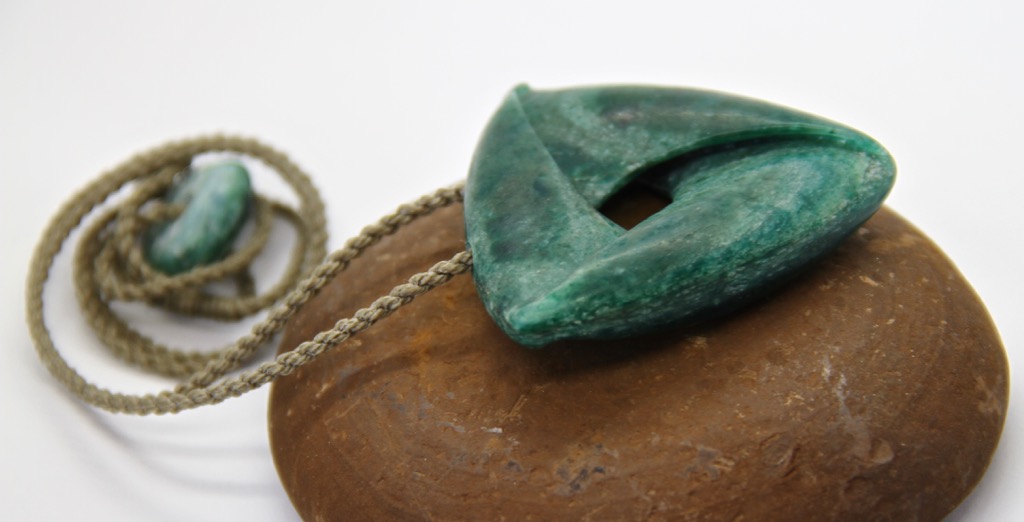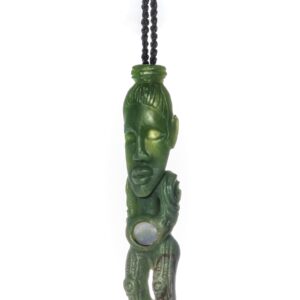Taku whatu- My stone/my eye.
Moebius- Emerald green
Aotea-kyanite, Fucshite
Deep green Aotea of AAA+ quality entices the observer to behold simple, balanced lines that reverse on both sides. An elegant yet powerful symbol of a change of energy. Perhaps we see the world differently, perhaps it’s time we observe deeply, perhaps it’s time we redefined our concept of who we are and how we operate. Perhaps it’s time to open the eyes of our heart and reconnect to the earth and our place with each other in Shared participation lead from the heart. “Hūtia te rito o te harakeke, kei hea te Komako e kō? Ki mai ki ahau he aha te mea nui o te a, maku e ki atu, he tangata, he tangata, he tangata!- Pluck the heart of the plant and where will the bird sing its joyful song? Enquire of me, what is the greatest thing in the world, I will tell you it is people, it is people, it is people.”
Already Ancient Aotearoa hand make all our stones in Aotearoa NZ. No two stones are the same!
The mobius is essentially a loop that has been given a twist. We compare it to the theme of Takarangi. It may be recognised by mystics as the image of the Ouboros (a snake eating its tail)/ the symbol of infinity. The shape of the equilateral triangle is associated by some as the shape of power, the pyramid. This moebius puts the apex of that pyramid to the bottom of the triangle rather than the top thus reversing the power structure. The colour is juicy. The feeling, fat and bursting. The negative space becoming as an eye that draws in the beholder to the great mystery of connection. We thought of the way all ancient cultures contain the memory of our shared origins. We learned the Māori name for Mountain is maunga wehetūrangi- This full name means "to hold the stars in the sky". We were inspired by the concept of the eye and the pyramid/ mountain when we stood on an ancient pyramid in Java. Here, our guide explained that the word "batu" means stone. In te Reo Maori, "whatu" means "eye" whists "kōwhatu" means "stone". We also learnt that the word "sky" is "langi" the word "cry" is "tangis", the word for "head-lice" is "kutu" and the name for the indigenous people is " Kanak Benua" (in Aotearoa NZ this is Tangata Whenua). For those who study Polynesian language the connections are striking and we couldn't help but ponder on how old we really are, the ancient and diverse trails our shared ancestors travelled.
Additional information
| Weight | 35.8 g |
|---|---|
| Dimensions | 50 × 50 × 8 mm |








